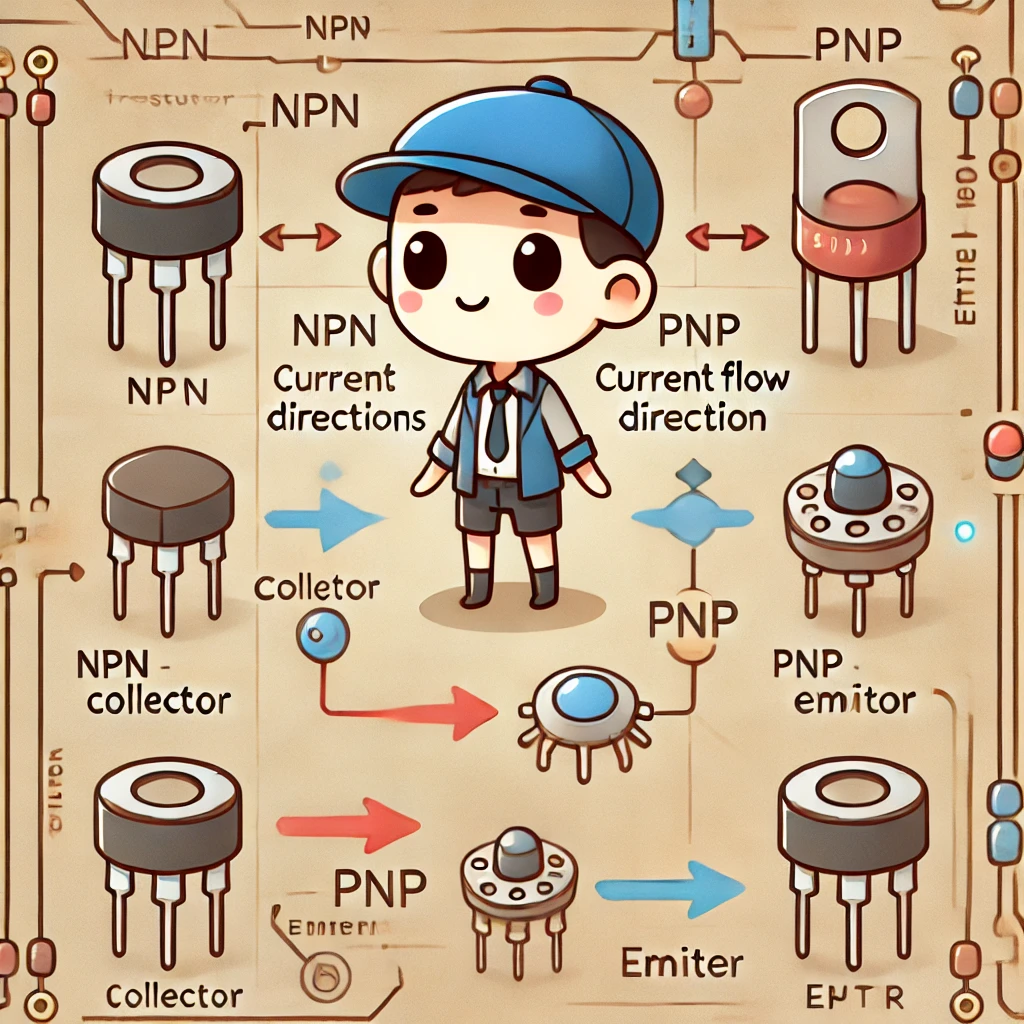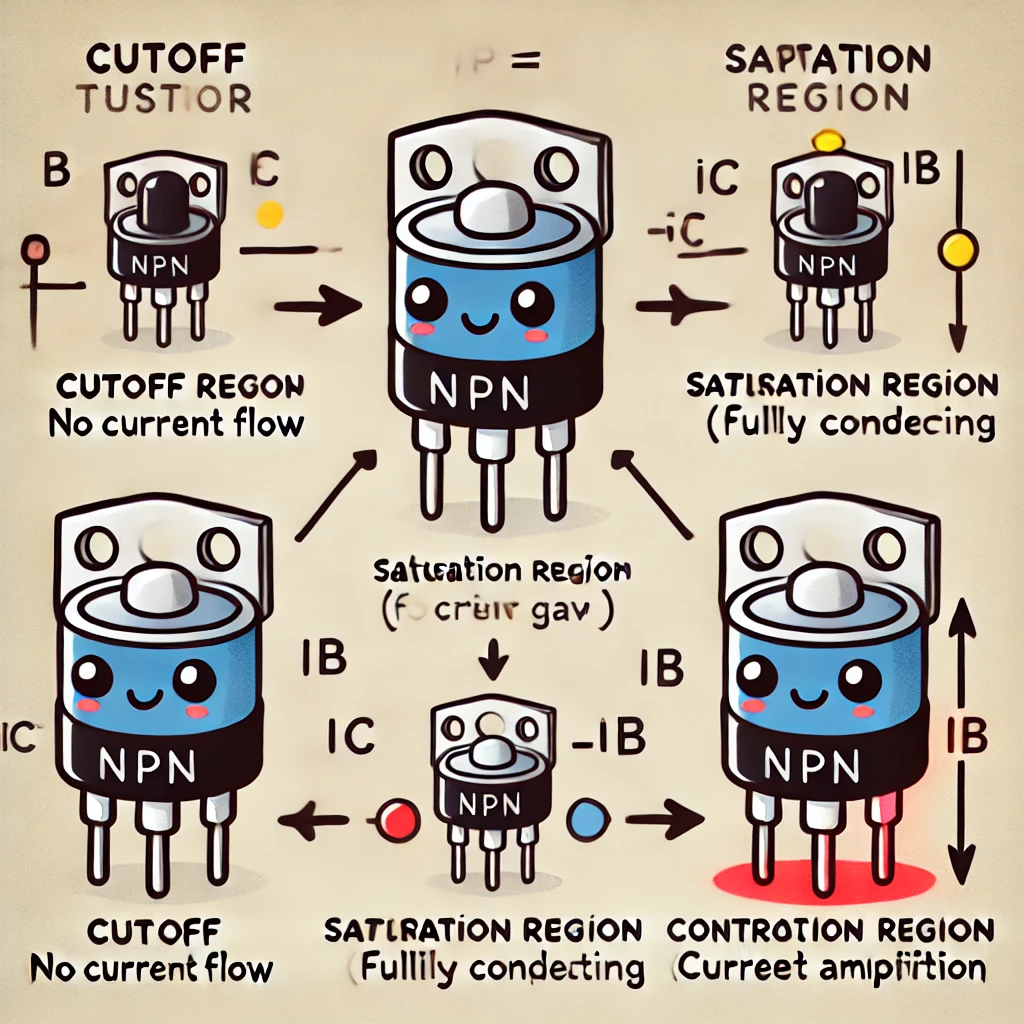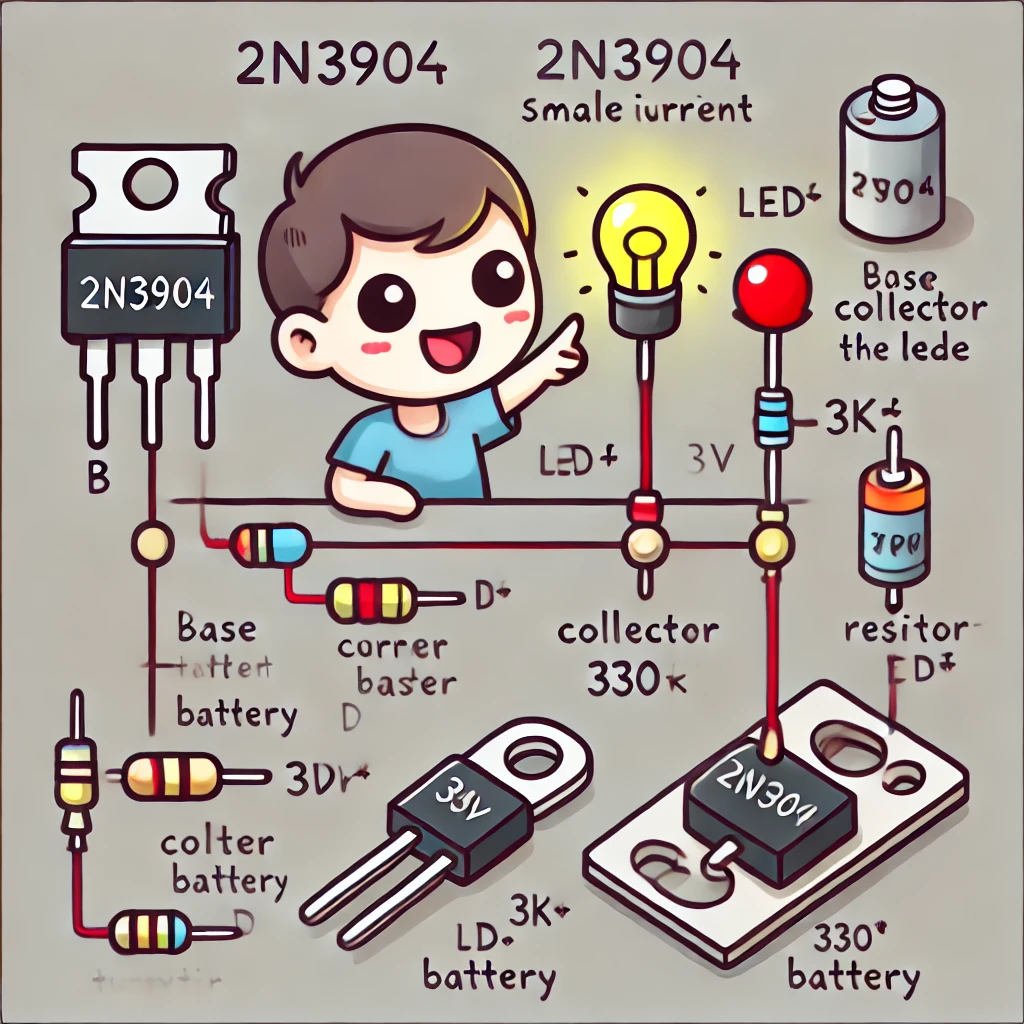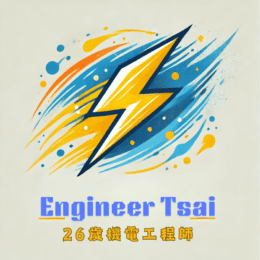Watch Now: What Is a Transistor? How Does It Amplify Current?
Learn how transistors control large currents with small signals, enabling amplification and switching. We’ll explore NPN vs. PNP transistors and their role in audio, digital circuits, and power control, with clear explanations and hands-on demos!
What is a Transistor? How Does It Amplify Current?
A transistor is a fundamental component in modern electronics, widely used for signal amplification, switching, and digital circuits. It can amplify weak signals or act as an electronic switch to control larger currents. Whether in audio devices, computer processors, or power control circuits, transistors play a crucial role.
In this article, we will explore the basic structure, working principles, applications, and how transistors amplify current.
Basic Structure and Working Principle of a Transistor
A transistor is made up of three layers of semiconductor material and has three terminals:
- Base (B) – Controls the flow of current.
- Collector (C) – The terminal where the main current flows out.
- Emitter (E) – The terminal where the main current flows in.
Depending on the arrangement of semiconductor materials, transistors are categorized into two types:
NPN Transistor (N-type – P-type – N-type)
- When the base voltage is higher than the emitter, it allows current to flow from the collector to the emitter (C → E).
- Commonly used in digital circuits and amplifiers.
PNP Transistor (P-type – N-type – P-type)
- When the base voltage is lower than the emitter, it allows current to flow from the emitter to the collector (E → C).
- Often used in specialized amplification circuits and power applications.
Transistors serve as the foundation of modern electronic devices, enabling efficient signal processing, current control, and circuit operation.

How Does a Transistor Amplify Current? – The Amplification Effect
One of the key functions of a transistor is current amplification, allowing a small current to control a larger one. This behavior can be categorized into three operational modes:
1. Cutoff Region
- When no voltage is applied to the base, the transistor remains off (non-conductive), and no current flows.
2. Saturation Region
- When the base voltage is sufficiently high, the transistor fully conducts, acting like a closed switch, allowing a large current to flow from the collector to the emitter.
3. Active Region
- When the base current increases, the collector current is amplified by a fixed ratio, known as the current gain (β or hFE).
- The amplification relationship is given by: IC = β × IB
Where:- IC = Collector current
- IB = Base current
- β = Current gain (typically between 20–1000)
- In this active region, transistors are used for signal processing, such as in audio amplifiers and radio frequency (RF) amplifiers.
Key Applications of Transistors
1. Current Amplification
Transistors are widely used in audio and RF amplification applications.
✅ Headphone Amplifiers – Boost weak audio signals to drive speakers.
✅ Radio Transmitters – Amplify RF signals for long-distance transmission.
2. Electronic Switching
Transistors function as electronic switches in digital circuits, controlling high-voltage or high-current devices.
✅ Microcontroller LED Control – Low-power microcontrollers use transistors to drive high-power LEDs.
✅ Relay Driver Circuits – Use low-voltage signals to switch large electrical loads.
3. Oscillation & Signal Processing
Transistors also generate oscillating signals for various applications.
✅ Clock Oscillator Circuits (e.g., NE555 Timer)
✅ Modulation Circuits in Wireless Communication
Transistors play a fundamental role in amplification, switching, and signal generation, making them indispensable in modern electronics.

Simple Experiment: Testing Transistor Amplification
You can observe the current amplification effect of a transistor using a simple circuit.
📌 Materials Needed:
- NPN transistor (e.g., 2N3904)
- LED
- 3V battery
- 1kΩ resistor (for the base)
- 330Ω resistor (for the collector)
- Connecting wires
📌 Steps:
- Connect the 330Ω resistor and LED to the collector (C) of the transistor and the positive terminal of the battery.
- Connect the 1kΩ resistor to the base (B) of the transistor.
- Apply 3V to the base terminal and observe the LED.
🔎 Result Analysis:
✅ When voltage is applied to the base, a small current controls a larger current, and the LED lights up.
✅ When no voltage is applied, the transistor turns off, and the LED remains off.
This experiment demonstrates how a transistor uses a small current to control a larger one, enabling switching and amplification functions.

Summary & Further Reading
Transistors are the foundation of modern electronics, playing a crucial role in amplification, digital switching, and signal processing. Understanding their structure and operation allows us to design better circuits and integrate them into various electronic applications.
📌 Further Reading:
🔹 [Current & Voltage for DIY Enthusiasts : Unlock the Basics]
Explore how current and voltage influence transistor operation.
🔹 [Diode Fundamentals: How It Regulates Voltage and Controls Current]
Learn the differences between diodes and transistors and their respective applications.
🔹 [MOSFET vs. BJT: Which Switching Device is Better for Your Application?] (Coming Soon)
Compare the advantages and use cases of MOSFETs and bipolar junction transistors (BJTs).
🔹 [How to Choose the Right Transistor?] (Coming Soon)
A guide to different transistor types and their best applications.
💡 Have questions about transistors? Feel free to leave a comment or subscribe to our blog for the latest updates on electronic technology! 🚀


